We first became aware of Arlee Barr when we had a rather heated discussion in the comments section of a post we published about using Pinterest for textile artists. While we didn’t necessarily agree on that particular subject, it was clear that Arlee was extremely passionate about her work as an artist (On a side note, please don’t pin any of the images included in this interview). Carolyn Saxby also mentioned her admiration for Arlee’s work (especially her experiments in eco and natural dyeing) in her interview with us.
Arlee’s textile art is detailed, unique and unusual; she has her own voice. Having read part one of this fascinating two-part interview several times, we can’t think of a better way to introduce Arlee than borrowing words from her own website; “Surrealist in thought, Fauvist at heart”. We were keen to find out more about her journey, how her work has developed and her unique process.
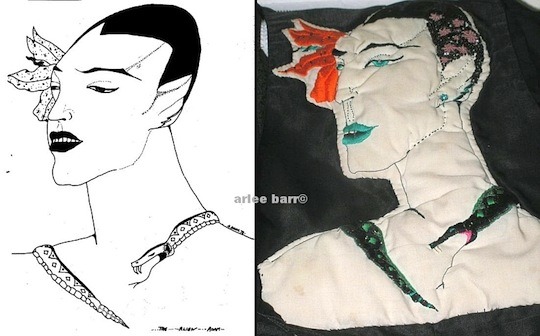
Breaking the rules
What initially captured your imagination about textile art?
I have a long history with textiles, coming from a matriarchal family involvement born of necessity. My great grandmother created out of need for the family’s wearing and home use, my grandmother and great aunts worked in the early garment sweatshops but found time for artistic pursuits with needle and thread. My mother invented unique wardrobes for both herself and i. All of us created with what we already had or what we found, using common sense and respecting utility in what is now called up-cycling and repurposing. It was second nature for all of us to “decorate” the hand me downs, the re-cuts and the rag scraps.
I was also raised during the “hippie years”, but there were no local hippies as it was a farm driven area of mid Western Ontario! My mother was widely read, immersed herself in museum and gallery visits, bringing home a new sensibility about world apparel and style, almost a hippie in her wanderings through those respectable findings.
As a young penniless single mother, i itched for beautiful things, and resorted to creating my own with clothing that had been donated to the Free Box in the neighbourhood, combed thrift shops and bought from the dollar rack at fabric stores. Fabric is fabric whether it’s new yardage or Granny’s curtains and sheets, and i realized that sewing different things together i could create something not only “new” but unique to myself.
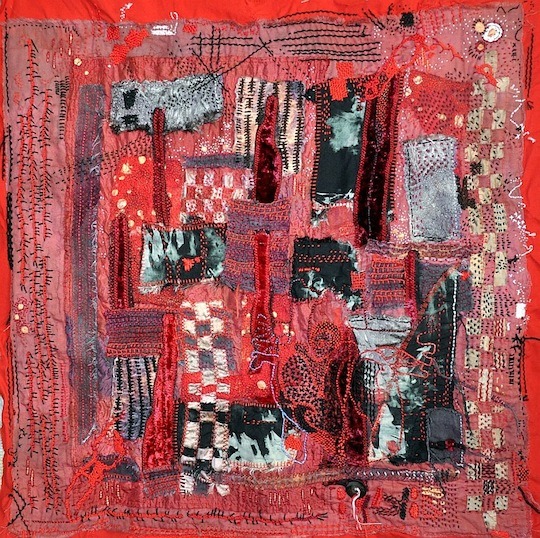
What or who were your early influences and how has your life/upbringing influenced your work ?
I credit my mother first and foremost. She taught me to break the rules, to think as an individual and to re-invent the wheel. My grade 8 home economics teacher was bothered by the fact that while everyone else was busy figuring out the intricacies of an apron or pyjama pants, i was already making more complicated gusseted and gored mid Eastern styled dresses! I was the girl in high school with the tunics made from my Great Granny’s old bark-cloth curtains, the red fake fur hot pants and the patchwork floor length swirl skirt. I was also lucky enough to be hanging around with a bunch of students who were taken under the wing of an incredibly talented art teacher who would take us to Hamilton and Toronto to the galleries and art colleges, on his own dime.
In my 20’s i found the first quilting magazines on the market, leading in an indirect path to Yvonne Porcella, Virginia Avery and Jean Wells and started really going to town with the patchwork and piecing. I was already a whiz with a sewing machine having been taught at age 6 to use one, and when i discovered that i could applique with it, i was blown away by the design possibilities: i could now “translate” all my pen and ink drawings into textile work!
I also discovered Alexandra Jacopetti’s “[easyazon_link asin=”1466981725″ locale=”UK” new_window=”default” nofollow=”default” tag=”wwwtextileart-21″ add_to_cart=”default” cloaking=”default” localization=”default” popups=”default”]Native Funk and Flash ” (1974), a little book about *real* hippie embroidery and fashion, savouring the uniqueness, but not realizing how many years it would be before hand embroidery would really become part of my own lexicon. I still treasure this book! All along, my extremely slim pursed single mom budget dictated that i use what i could find or what i could scrimp pennies for. Threads were really cheap, cheaper than ink and paper.
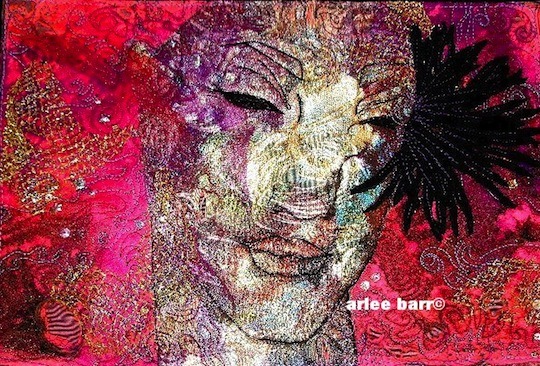
Letting the fabric move
What was your route to becoming an artist?
I’ve always considered myself an artist, whether it was my first realistic renderings of an airplane (the family having lived several years above a hanger when i was quite young!), drawings of plants and animals, writing poetry and critiques for a Canadian literary magazine when i was 16, moving onto pen and ink renderings of fantasy elements in my late teens and then in my 20’s, with a child added to the mix, translating my drawings into embroidery and making clothing for myself and my son that were way past the considered norm of the time ( I could find that boy in *any* crowd 🙂 ).
In my 30’s i started selling my wearable art and with the encouragement of friends and a helpful counsellor, entered a 2 year Textile Arts programs at North Vancouver’s Capilano College (BC), 1993-95 (Now known as Capilano University and with the program cut and gone, sadly…). I joked for years after that all i learned was how to better my machine applique from that 2 year period, not knowing how much of the art history and design ethic actually sank in. I’m grateful that it did, finally seeping up from the depths to colour what i am and how i do things almost 20 years later.
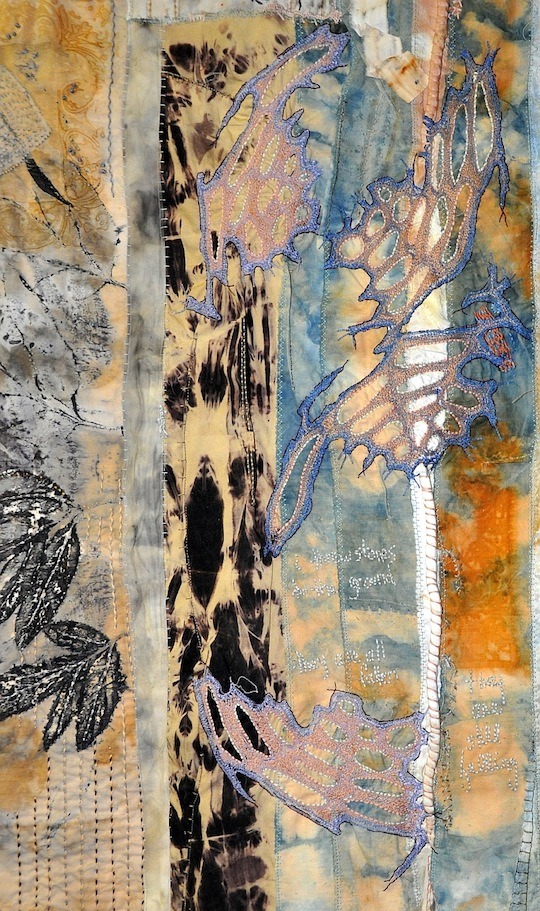
What is your chosen medium and what are your techniques?
For many years i depended on commercial fabrics, not knowing that dyeing with basic “over the counter” dyes like Rit, Dylon and Tintex could shake them up, never mind the synthetics like Procion, or any of the plethora now of fabric colourants. Even so, there was a long period where i lost myself, literally and figuratively, in the explosion of “mixed media” where every colour was used, every texture, every technique, every found and bought object with every commercial product imagined. The only thing that held it all together for me, however weakly, was the fabric that was the base i worked from, and the fact that suddenly i was making something that was not wearable, that didn’t have to fit anyone, but that was possibly art.
When i discovered natural dyeing and other organic cloth marking methods, my whole approach changed. Initially even with these elemental fabrics, i used a fair bit of machine work, then slowly moved into just hand embroidery, finding that the look (while more delicate appearing), was quite strong and unifying. As i continue to “find the image” in the unique marks inherent in the process of staining or dyeing, they are becoming works with an amalgam now of machine and hand.
I use a lot of free motion embroidery as it can be very gestural, using those areas as either accent or a base to build on with hand embroidery. When i was first doing hand embroidery in my 20’s, i knew only of satin stitch and french knots, but now i prefer cleaner lines and the effects from back stitch, wrapped back stitch, running stitch and a few fancies thrown in along the way for texture. I let the fabric move as it will in some cases, and with those basic stitches used experimentally, can control the depth of manipulation and the resulting texture.
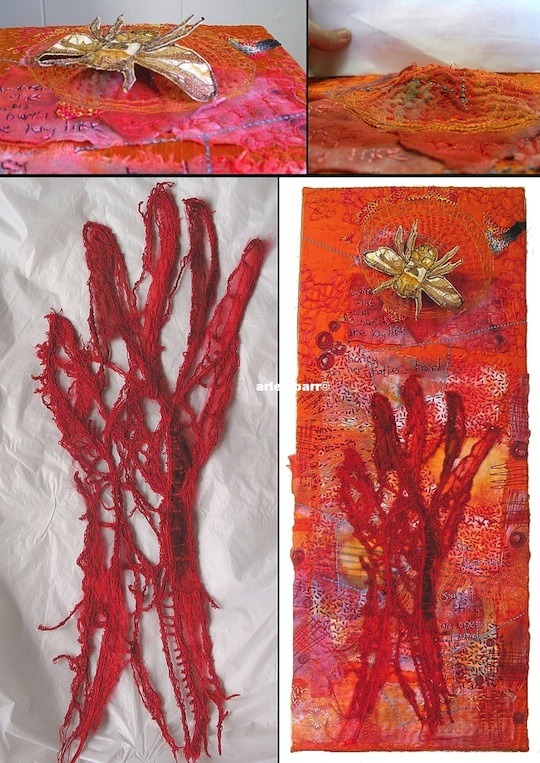
Healing, calming and necessary
How would you describe your work and where do you think it fits within the sphere of contemporary art?
I don’t fit comfortably into a label here – i’m using traditional methods but illustrating very idiosyncratic stories. I like to think i’m using a medium in a way that goes past some of that tradition: there’s more to embroidery than lazy daisies and running stitch “Kantha” work. There’s more than an Earth Mother sensibility to the fabric. I’m more of an intuitive maker than a deliberate product artist. Maybe i’m an Outsider Artist, or an Artist Brut. Much of my imagery and subtexts relate to what is internal to me; i can only hope that someone else can feel what i am saying.
Having dealt with mental health issues all my life, i can only say that it is healing, calming and necessary to express myself as i do in this medium. Cloth is soothing to everyone, from birth to death and all the days in between. I do believe that today’s world with all it’s supposed cosmopolitan and sophisticated attitude yearns for a more personal, grounded approach to art, one without heavy concept, overly political statement or existing for sheer prettiness’s sake.
Tell us a bit about your process and what environment you like to work in?
Often the initial idea comes from a phrase and i need to find the fabric and threads that exemplify that idea. I constantly scribble words, little Shibboleths that would make no sense to anyone else, and one will jump out and that’s the start.
Without meaning to sound airy fairy, i’ll sift through my piles of cloth until a particular fabric tells me what it wants. I usually have an emotional idea, not the words per se but feelings about what’s behind the word, of what i want to express and along the way elements will slide in – or out. Sometimes it’s a colour of thread that will make itself known as a line, sometimes it’s a secondary fabric that needs to be stepped in as a design component.
I need quiet, i need solitude. I’m not a delicate flower who shelters herself from the world, but i am a loner by choice and by necessity. I’ve tried during residencies to work around others, but even when they are quiet, they are still there. My focus and concentration in those moments has to be perfect. I have a home studio, but i prefer to work on my back deck in good weather, and in my couch corner if not. I do like my dog to be nearby though! Though i can’t stand having music or chatter, i can get a lot of stitching done with the TV on old movie days 🙂

You can find out more about Arlee in the following places online:
- Her website: albedoarlee2.wordpress.com
- Her Facebook page: facebook.com/pages/FybreSpace
- Or her shop: fibrespace.bigcartel.com/
Please don’t pin any images found in this interview. They are the property of the artist.
If you’ve enjoyed our interview with Arlee, let us know by leaving a comment below.
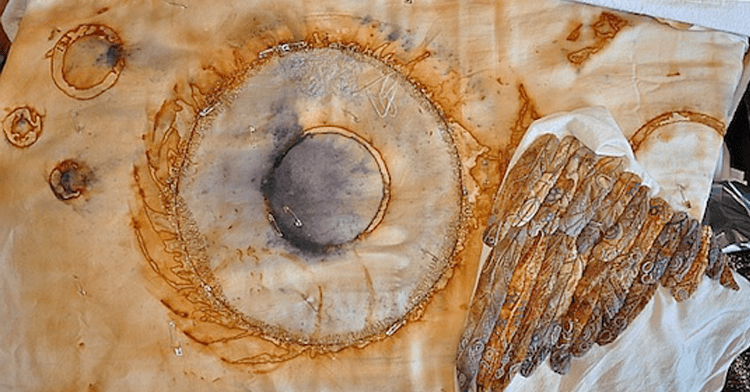
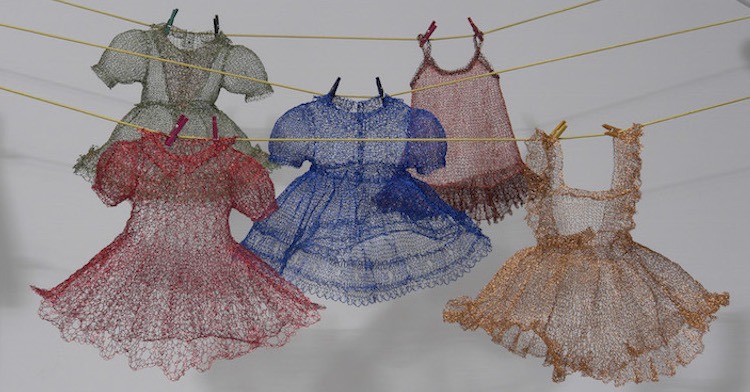
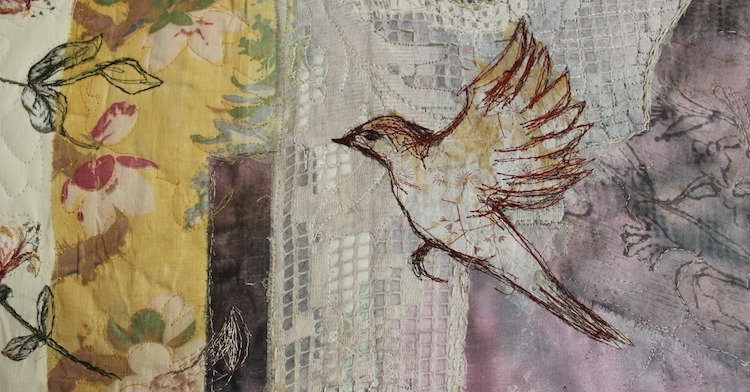
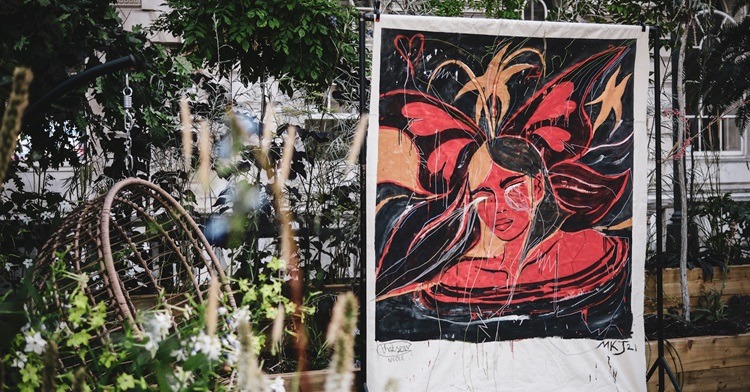
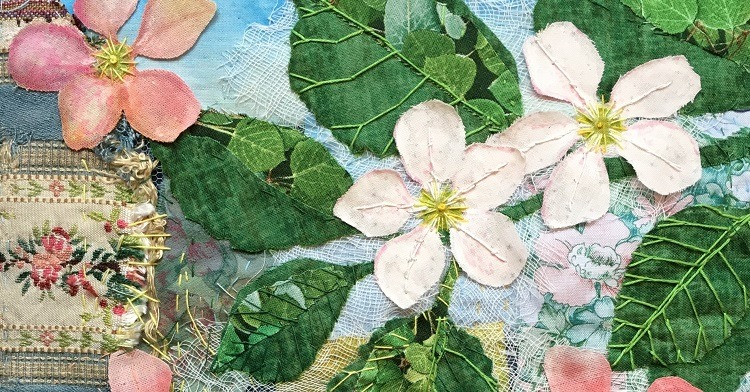
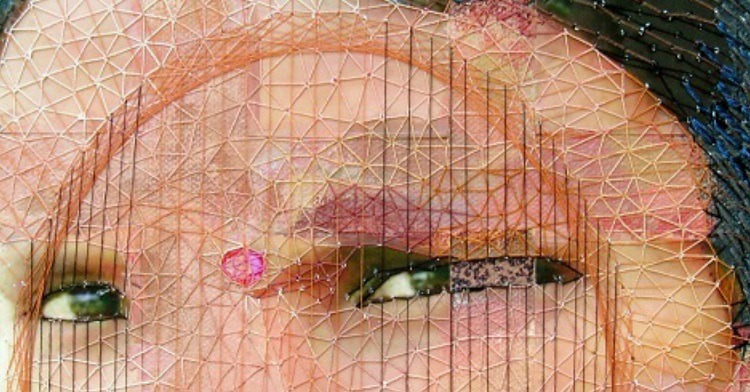
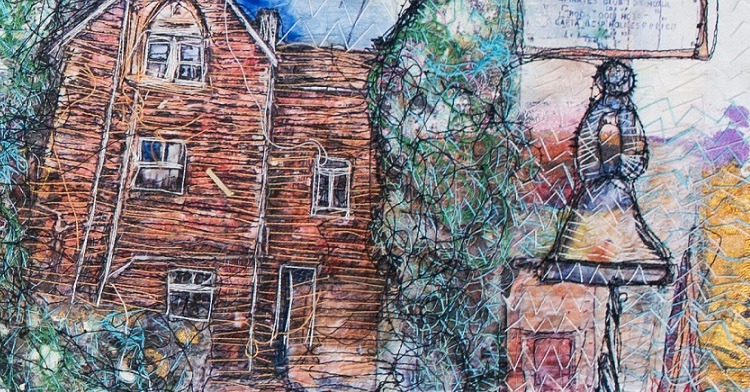
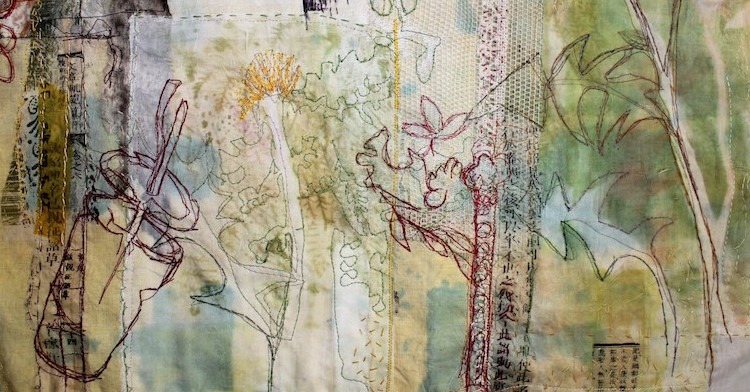
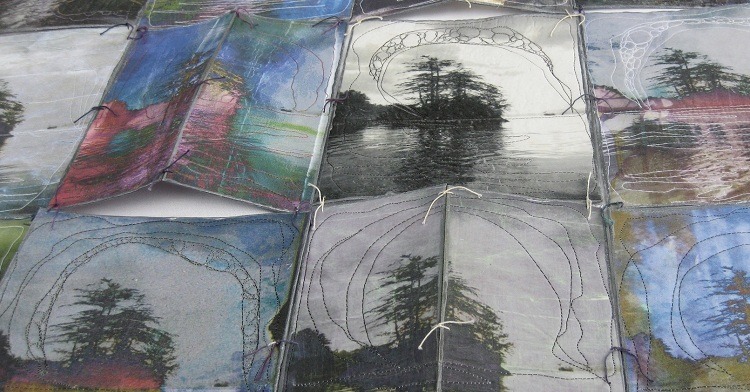
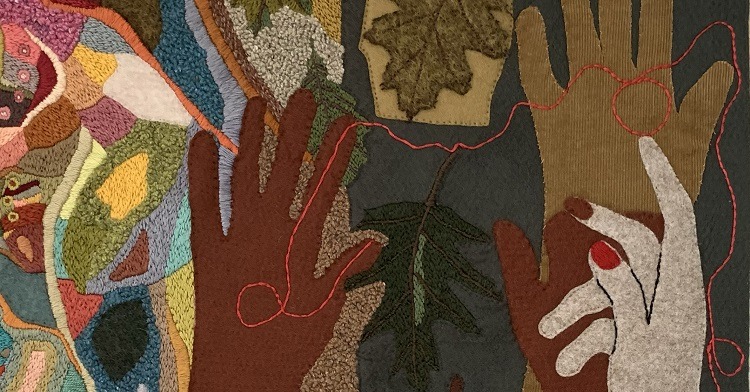
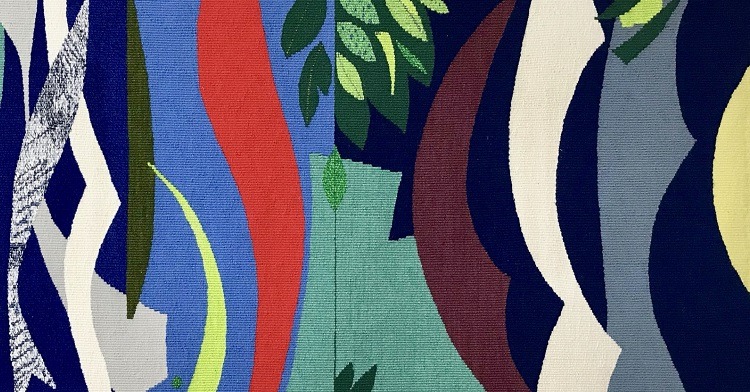
15 comments
MaryAnn Thompson
I am so so happy to have found this site! What a wonderful interview with Arlee Barr! You asked all the questions I would have, but more wisely. I’m sure I’d get lost in the answers.
Ms. Barr is generously forthcoming with her ideas and seems very approachable. We grew up in the same area and the same era, I think. I’ve just become aware of her art and look forward to seeing more of it on her website.
Thank you for this article. Just delighted to read it.
arlee barr
It might be a bit of an imposition, but is there any way that in both parts of the interview, could my address be changed to the current one please? Much appreciated! I’m at http://albedoarlee.wordpress.com now. (And you can delete the comment if you want after fixing 🙂 )
Sam
Hi Arlee, we’ve updated the link to your new website.
arlee
thanks
mirjam Bruck -Cohen
Lately i am thinking how Fiberart has evolved and still is growing to show us more and more possibilities . your art is shows exactly that. The ability to explore deeper into the materials we use and let them create `with us `….sings from these works .
mirjam
Wendy Feldberg
This comment from arlee is the best summing up of the honesty we need to aspire to personally and in our art: that the world today “yearns for a more personal, grounded approach to art, one without heavy concept, overly political statement or existing for sheer prettiness’s sake.” Thank you, arlee, for your example of sincerity and
inspiration in your life and art.
Wendy
Shannon
Excellent interview. Such a pleasure to hear Arlee expound upon her work. Thank you.
Leonie
Arlee has always marched to her own drummer and for that I admire her greatly. She is not afraid to take chances with
her work , push herself into unknown territory or experiment with new materials. She is very generous in sharing ideas and techniques, is loyal and honest, sensitive and yes, opinionated , which only adds to her colourful and lively persona.
Thanks to Joe for this well written, in depth interview with Arlee. She is an inspiration to many!
Terri
Excellent interview. Though I’ve spoken with Arlee a few times, this interview gives a good understanding of her background and her work. Thank you for sharing that with us.
Marg in Mirror, AB
arlee and I have become friends in the past couple of years — across cyberspace and eventually, meeting face-to-face. I find inspiration in her work which relates to mine (fabric and stitch, including hand stitch) but which also contrasts greatly in its content and composition. Thank you for this interview, which has given me more insight into my treasured friend and colleague.
kiron
good site and good article.
arlee
Thanks again, Joe, for this wonderful opportunity to “explain” and “expose” 🙂
Karin Millson
An excellent review. And Arlee gives freely of her time to further other artists. She generously shares her experiences and is an ambassador for the Surface Design Association, representing Alberta. This sounds like a line from a school report – I think she would enjoy that, her sense of humour is legend!
Leisa Rich
An excellent and interesting interview of an eclectic artist! I lived very near to Arlee in the same time period as she, both in Ontario and in Vancouver, BC but don’t think I have ever met her in person. I would like to; we have participated in many conversations on-line and are both quite similar in our intensely private personas, as well as our habit of being fearless about making our beliefs, knowledge and opinions known! 😉 Thanks for the profile. I really enjoyed knowing more about her, her process, and seeing more of her art.
Marchi Wierson
Arlee is a very inspiring artist. And despite her not wanting people to pin her photos, she shares a lot of what she does and how she does it! Go Arlee!